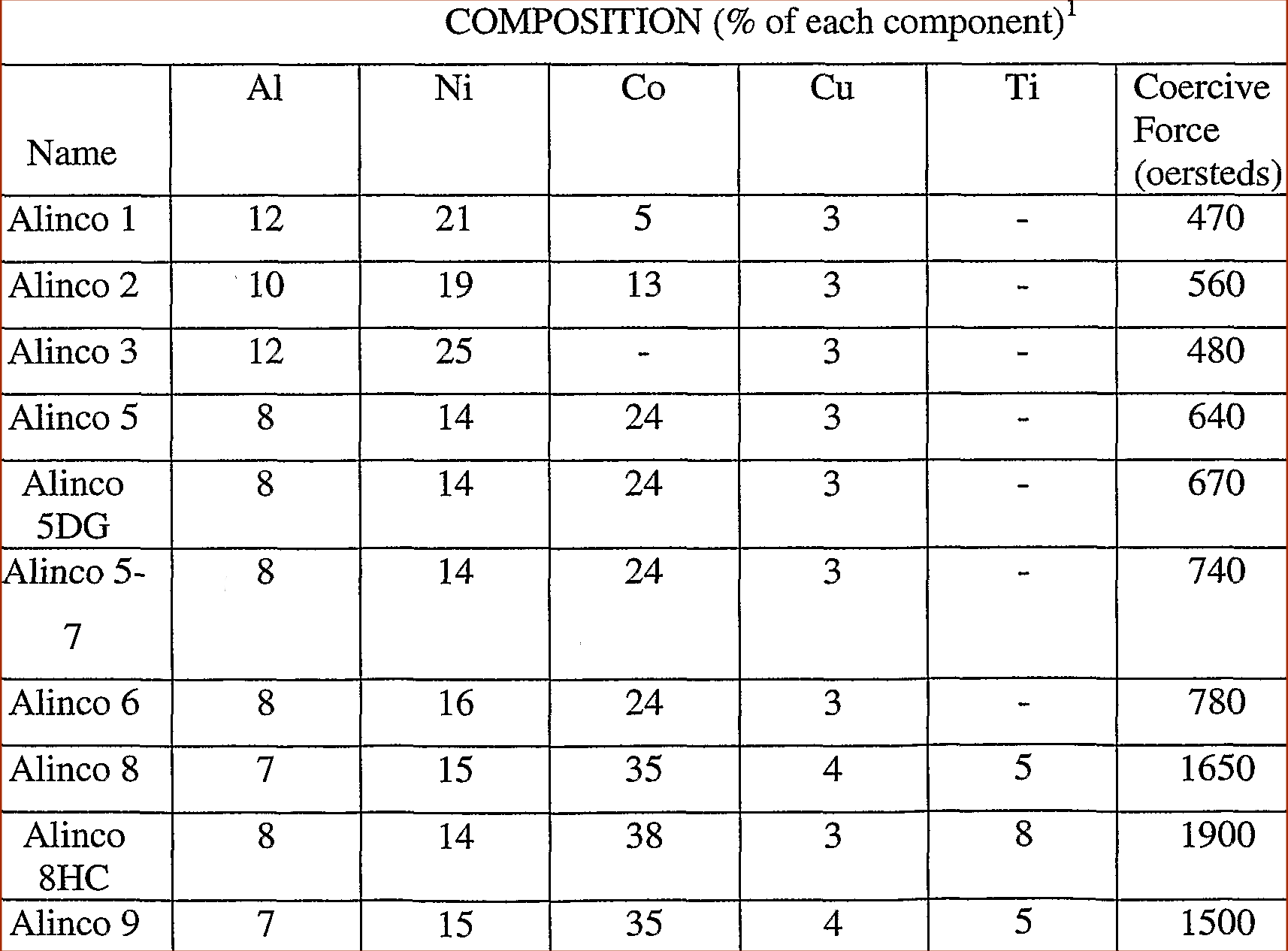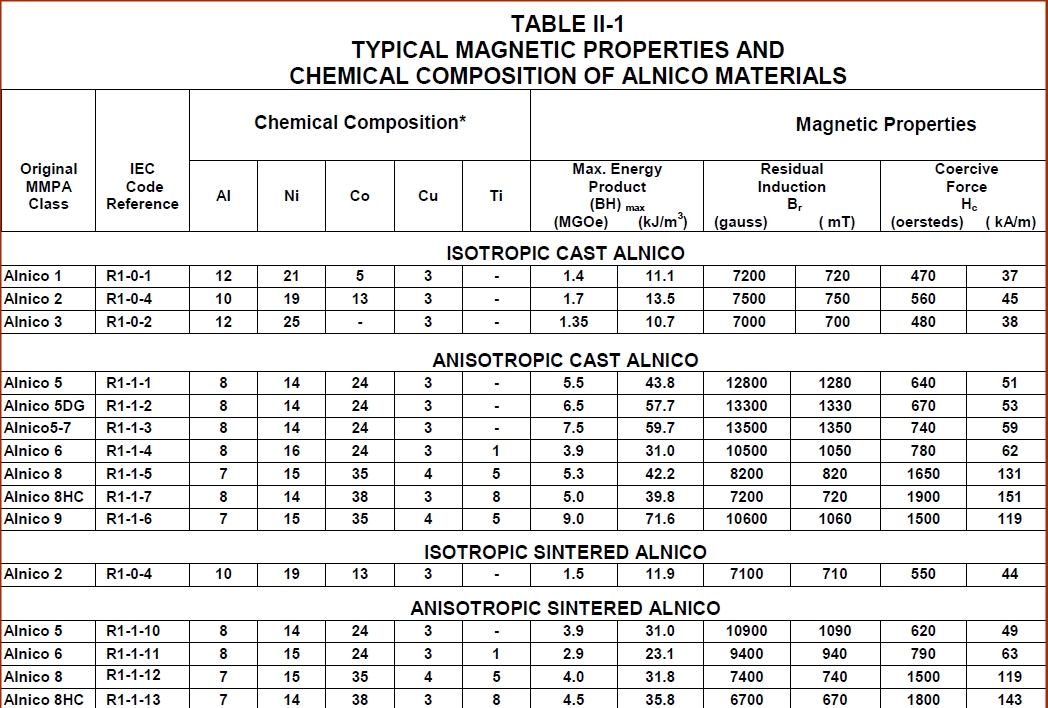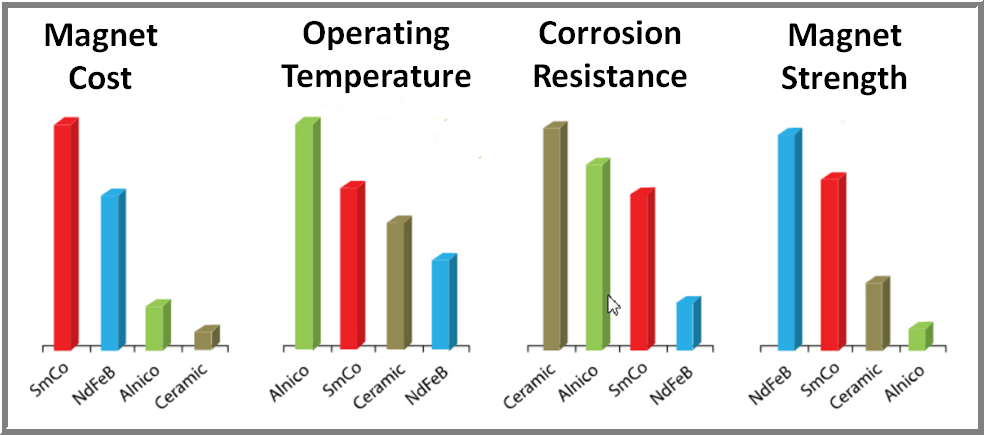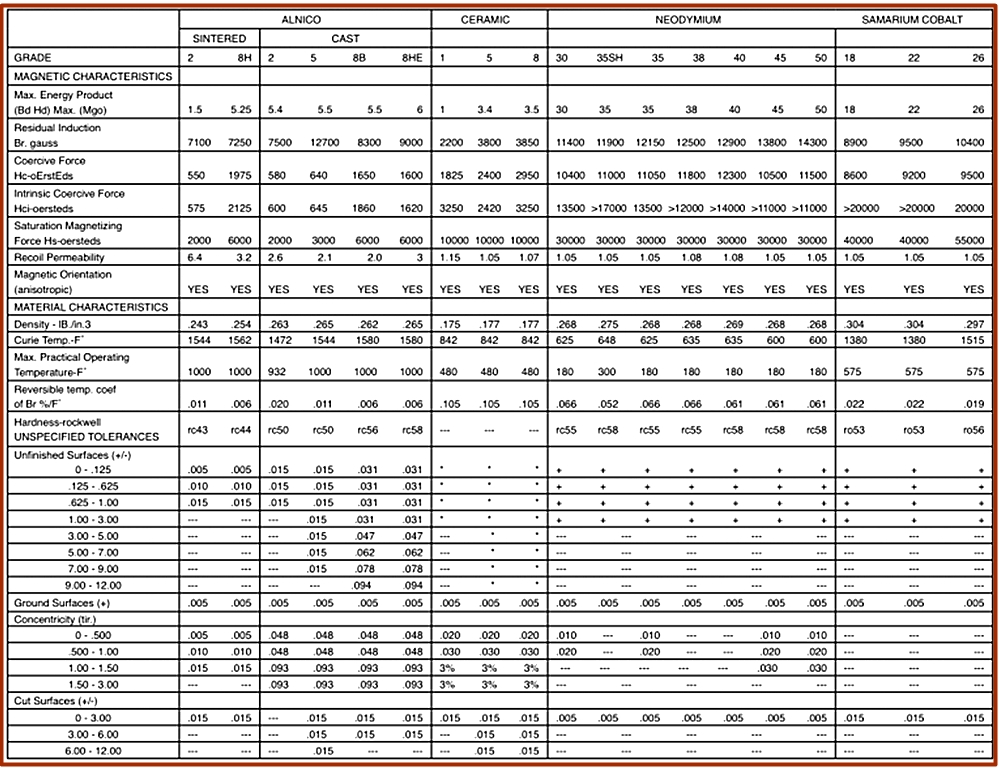The Differences between catagories of alnico magnets Alnico II vs Alnico V and more!
The Differences between catagories of alnico magnets Alnico II vs Alnico V and more!

Howdy guitar gang! Today we start our conversation on the somewhat "Black Magic" topic of AlNiCo magnets; their composition, qualities, and what that means to their tone. AlNiCo magnets go all the way back to their development in the 1930s. AlNiCo magnets get their name from what they are made of and that would be the metals aluminum, AL, nickel, NI, and cobalt, CO along with iron and other trace elements. In the blogs that will follow this one we will get into the individual qualities of the various grades of AlNiCo (lets just call it alnico from here on), but this blog will focus on the overall qualities of alnico as a magnetic material.

The numbers assigned to alnico do NOT represent power, but the chronological order they were first composed in.
Alnico magnets can be isotropic, which are able to be magnetized in any direction. Alnico 1,2,3 and 4 which is often sold as "un-oriented Alnico 5 are isotropic. Alnico magnets above grade 5 are anisotropic , which can only be magnetized on one axis. Note: Alnico 5 is the strongest and Alnico 3 the weakest, but Alnico 3 isnt REALLY alnico at all ... because it has zero Cobalt content. Okay, maybe old fashioned Alnico 1, the first ever Alnico composition is weaker, but it hasn't been used or available in decades, and was never used in guitar pickups or speakers.

Prior to the development of alnico magnets, there were only two magnetic forms that could be put to use in an electric design such as a loudspeaker and that is an electromagnet made from electricity and a coil or magnetite or lodestones which are naturally occurring magnet materials. The various alnico compositions are anywhere from about 5 to 20 times as strong as these natural magnet elements, so you can see why they were quickly adopted anywhere magnets were necessary like motors, generators, loudspeakers, and of course guitar pick ups.
The oldest (and most still consider the best) way of making an AlNiCo magnet is simply to heat all of the core metals to a liquid form mix them together and pour them into sand castings that are the exact size and shape that will be needed for the final magnets, these are the wonderful magnets of the 50s and 1960s guitar pick ups and loudspeakers. Alnico it’s a pretty awesome material in as much as it can be cast into almost any shape you can build a cast for. So it’s industrial uses were practically unlimited from the time of its invention until present day.In later years alnico magnets were produced by a process called stintering which grinds the elements into an ultra-fine powder and then they are compressed under enormous amounts of pressure into a mold and is then heated in a furnace to approximately 2000°F for a short period of time, this can produce high-performance small magnets and ring magnets used in popular loudspeakers. From a guitar players perspective, alnico made in this way generally does not provide as pleasing a tone in guitar pick ups, a little something to remember!
Alnico magnets do not require any form of coatings as they are naturally extremely resistant two oxidation and corrosion. However they are sometimes Color coated purely for aesthetic purposes.
A closing note: I'm not going to get into detail at this time, that will come later, but I feel the need to mention Ceramic, Samarium Cobalt (SmCo), and NdFeB (Neodymium, Ferric Oxide, and Boron) at this point. Here, I'll just breeze over the bullet-points! Starting with some graphs and charts for you to check out (or not, it's totally up to you).


- Ceramic magnets are also called ferric, because they are simply ferric oxide (rust) and strontium carbonate bonded together via heating to above 2,000-degrees F. They have Gauss levels similar to Alnico 5, but and considerably less residual induction. Their main benefit is much lower cost than alnico.
- SmCo magnets have Gauss levels twice that of alnico 5 and similar residual induction. They can provide quite pleasing tone in a guitar pickup, but they come at a premium cost; Samarium and Cobalt don't come cheap!
- Neo magnets are VERY strong magnets, with levels of Gauss as well as residual induction 2-3x that of Alnico 5. They are also quite expensive, as neodymium is also not cheap! The results in using neo in pickups have been mostly dismal, but neo use in producing lightweight loudspeakers is quite a big deal as of this writing (June 2022); although, guitar tone purists still find neo speakers lacking, they are widely used in PA systems and bass amplification.
- Samarium Cobalt and Neo magnets are also called rare-earth magnets as the elements neodymium and Samarium are listed as "rare earth metals" .
There ya go. AlNiCo from 50,000 feet. next week we will begin deep-diving into each grade of alnico popularly used in guitar pickup design.
Y'all come back, we'll start with the sweetest of all magnets, alnico III.
- VAUGHN SKOW's blog
- Log in or register to post comments

